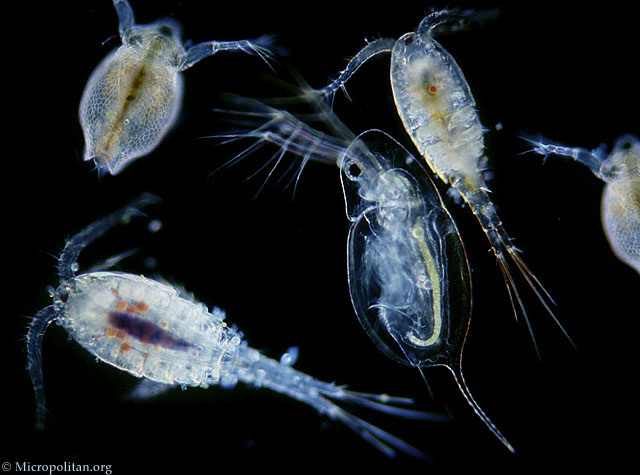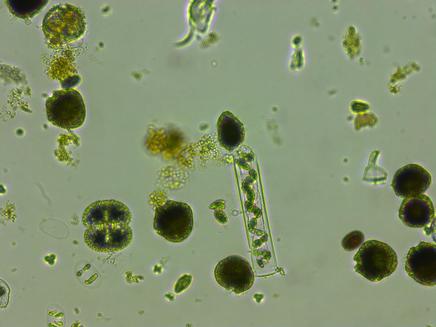Zooplankton
Zooplankton are organisms that have animal-like traits. There are both unicellular and multicellular species of zooplankton. Most zooplankton are heterotrophs meaning the obtain energy by consuming organisms such as algae or other plankton. Some zooplankton, such as dinoflagellates, are partially photosynthetic. They can get their energy from the sun or by consuming other organisms.
Phytoplankton
Phytoplankton are microscopic plants. They are autotrophs meaning they obtain their energy from the sun through photosynthesis. They are the primary producer making them a vital component of the ecosystem. Each consumer relies on phytoplankton because they are the base of the food web. Primary consumers like zooplankton feed on the phytoplankton. Secondary consumers are small prey fish followed by tertiary consumers like large predator fish. There are some fourth-level consumers including osprey and eagles that feed on large fish. Without phytoplankton this food chain would not exist.
Zooplankton are organisms that have animal-like traits. There are both unicellular and multicellular species of zooplankton. Most zooplankton are heterotrophs meaning the obtain energy by consuming organisms such as algae or other plankton. Some zooplankton, such as dinoflagellates, are partially photosynthetic. They can get their energy from the sun or by consuming other organisms.
Phytoplankton
Phytoplankton are microscopic plants. They are autotrophs meaning they obtain their energy from the sun through photosynthesis. They are the primary producer making them a vital component of the ecosystem. Each consumer relies on phytoplankton because they are the base of the food web. Primary consumers like zooplankton feed on the phytoplankton. Secondary consumers are small prey fish followed by tertiary consumers like large predator fish. There are some fourth-level consumers including osprey and eagles that feed on large fish. Without phytoplankton this food chain would not exist.
Location |
|

